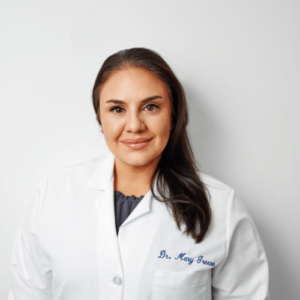
NEW YORK , NY, UNITED STATES, September 12, 2023/EINPresswire.com/ — Someone in the United States has a heart attack every 40 seconds, and 20% of those are so-called “silent” heart attacks, meaning the heart is damaged but the person isn’t aware of it. That’s according to the Centers for Disease Control and Prevention (CDC), who reports that each year more than 800,000 people in the U.S. experience a heart attack. With the prevalence of heart attacks so high, cardiologists like Dr. Mary Greene with Manhattan Cardiology and contributor to www.LabFinder.com, want to spread the word about signs and symptoms to watch out for.“Myocardial infarction—also known as a heart attack—is a serious and sometimes fatal form of trauma that deserves immediate medical care. The more time that passes without medical intervention, the higher the likelihood of severe long-term damage or death, so the importance of being aware of the symptoms and acting quickly cannot be overstated,” said Dr. Greene.
A heart attack can have many causes, but the end result is that the muscles of the heart itself stop receiving enough blood to properly function. If blood flow is not restored, the oxygen-starved muscles suffer permanent damage. The lack of blood flow can cause immediate effects that a person may notice and be able to act upon before permanent damage sets in.
To that end, there are a handful of major symptoms of heart attack.
Chest Pain or Discomfort
“This sensation might feel a little bit different based on the individual and the circumstances, but most heart attacks will involve some level of chest pain or discomfort,” said Dr. Greene.
The heart is not quite centered in the chest, situated more toward the left side. For this reason, people having a heart attack often report experiencing chest pain in the center or left side of their chest.
The pain may be intense, but in other cases it might be better described as discomfort. It could feel like:
fullness
squeezing
pressure
tightness
heaviness
burning
This feeling could persist for several minutes. It’s not unusual for this feeling to come and go in waves, receding and then returning again. This is the most common sign of a heart attack and generally affects both men and women.
Shortness of Breath
Another common symptom of a heart attack is shortness of breath. This symptom is also common in both men and women and may be more common among older adults.
Most people are familiar with the uncomfortable feeling of not getting enough air. It’s often brought about by physical exertion, such as vigorous exercise, or even from taxing activities such as going up many flights of stairs.
Sudden shortness of breath without an obvious cause, such as while sitting in a chair, can be a sign of heart attack. It might begin at the same time as chest pain, but can also begin before or after. Less frequently, someone might experience shortness of breath without chest pain.
Sometimes this can also be accompanied by coughing or wheezing.
Pain or Discomfort Elsewhere in the Body
“The area immediately around the heart is an obvious place where someone might experience pain or discomfort during a heart attack, but it’s not by any means the only place. Nearly any part of the upper body can be affected,” Dr. Greene said.
Someone having a heart attack might experience pain or discomfort in any of the following body parts:
one or both arms
one or both shoulders
jaw
neck
back
stomach
Suddenly Light-Headed
This symptom is more common in women, though it’s possible for anyone to experience it. The sudden disruption of normal blood flow can manifest in several ways that affect a person’s sense of consciousness, taking any of the following forms:
light-headedness
dizziness
feeling faint
weakness
tiredness (sometimes lasting several days)
“Stomach Issues”
Other symptoms of heart attacks are often thought of as “stomach issues,” though they need not actually be caused by the stomach. These include symptoms such as nausea or vomiting. These symptoms are also more common among women but could be felt by anyone having a heart attack.
Other Signs of a Heart Attack
Though less common than other symptoms, some people may experience:
sudden excessive and unexplained sweating
cold sweat
anxiety
noticeably rapid or irregular heartbeat
indigestion
“The symptoms of a heart attack will vary from person to person, so there’s no one symptom that we can point to and say, ‘this means you’re having a heart attack.’ However, the constellation of symptoms in total are recognizable to most people as a problem, and the quicker we can get people to act on the feeling the more lives that will be saved or improved,” said Greene.
“If you’re not sure, don’t chance it. If you think you or someone else might be having a heart attack, call 911 right away,” she added.
Manhattan Cardiology is the premier facility for cardiac testing and preventive treatment in
New York. www.manhattancardiology.com
Dr. Mary Greene is a cardiologist and Director of Women’s Health at Manhattan Cardiology who emphasizes individualized treatment and preventative medicine. www.manhattancardiology.com www.LabFinder.com
